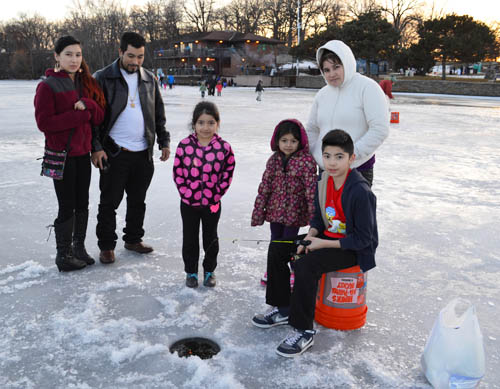The Metropolitan Council has set a minimum percentage of Minnesota Parks and Trails Legacy funding to be spent on “connecting people and the outdoors” in the Regional Parks System.
 The Council’s action directs the 10 regional park agencies to spend 5% of Legacy dollars on connecting people to the outdoors in fiscal years 2018-19. The goal is to reverse a decline in participation in outdoor recreation by attracting new users and retaining existing users of the parks and trails.
The Council’s action directs the 10 regional park agencies to spend 5% of Legacy dollars on connecting people to the outdoors in fiscal years 2018-19. The goal is to reverse a decline in participation in outdoor recreation by attracting new users and retaining existing users of the parks and trails.
Key strategies identified in the state Parks and Trails Legacy Plan (pdf) for connecting people and the outdoors include:
-
Creating a welcoming environment
-
Ensuring access to the parks and accessibility within the parks, including keeping costs affordable
-
Promoting outdoor recreation opportunities
-
Providing quality experience in the parks
-
Engaging participants through programming and special events to foster lifelong participation
-
Through partnerships, reach more people, provide more services, and maintain higher quality facilities than can be accomplished alone.
Share of spending will rise gradually over six years
 The Council adopted a gradual increase of Legacy fund spending to a minimum of 10% for connecting people and the outdoors by 2022. Regional park agencies are directed to allocate:
The Council adopted a gradual increase of Legacy fund spending to a minimum of 10% for connecting people and the outdoors by 2022. Regional park agencies are directed to allocate:
Today, Minnesota’s State Parks and Trails are dedicating 17% of their Legacy dollars to connecting people and the outdoors, while regional parks agencies are spending an average of about 3%, noted Raintry Salk, Parks Research Analyst for the Council.
The Council’s action has no impact on the regional park agencies’ total Legacy allocation, which is determined by a formula in state statute. The action puts into practice the Council’s 2040 Regional Parks Plan policy, which states that, “The Council will identify a minimum percentage of Parks and Trails Legacy appropriations that should be used to ‘connect people and the outdoors.’”
Council Member Wendy Wulff, who serves as the liaison to the Metropolitan Parks and Open Space Commission, said she believes that laying out a trajectory of expected spending gives parks agencies time to plan their budgets. She also noted that the Council will be updating its parks plan in three years, at which time the action can be evaluated.
Direction addresses decline in outdoor recreation in some populations
“The decline in outdoor recreation participation is an alarming trend,” the Parks and Trails Legacy Plan for Minnesota states. The plan cites the benefits of outdoor recreation, ranging from physical activity to social and family bonding and education for children. “People who engage with nature are more likely to have an appreciation of the natural world—and want to support and maintain it for future generations,” the plan states.
Based on statistical research, the plan identifies several groups whose participation in outdoor recreation is either declining or underrepresented. These groups, where funding is expected to be targeted, include:
Both the Parks and Trails Legacy Plan and the Council’s Parks Policy Plan were adopted after input from a broad base of stakeholders, including park implementing agencies, park and trail partner organizations, and park users. Minnesota voters in 2008 approved a Constitutional amendment to increase the state sales tax by 3/8 of 1% for 25 years, to provide new funding for outdoor preservation, water quality, arts and culture, and parks and trails.
The Parks and Trails Legacy Plan includes four strategic directions across which to balance spending. They include:
1) connect people and the outdoors, 2) acquire land, create opportunities, 3) take care of what we have and 4) coordinate among partners.
Posted In: Parks, Planning